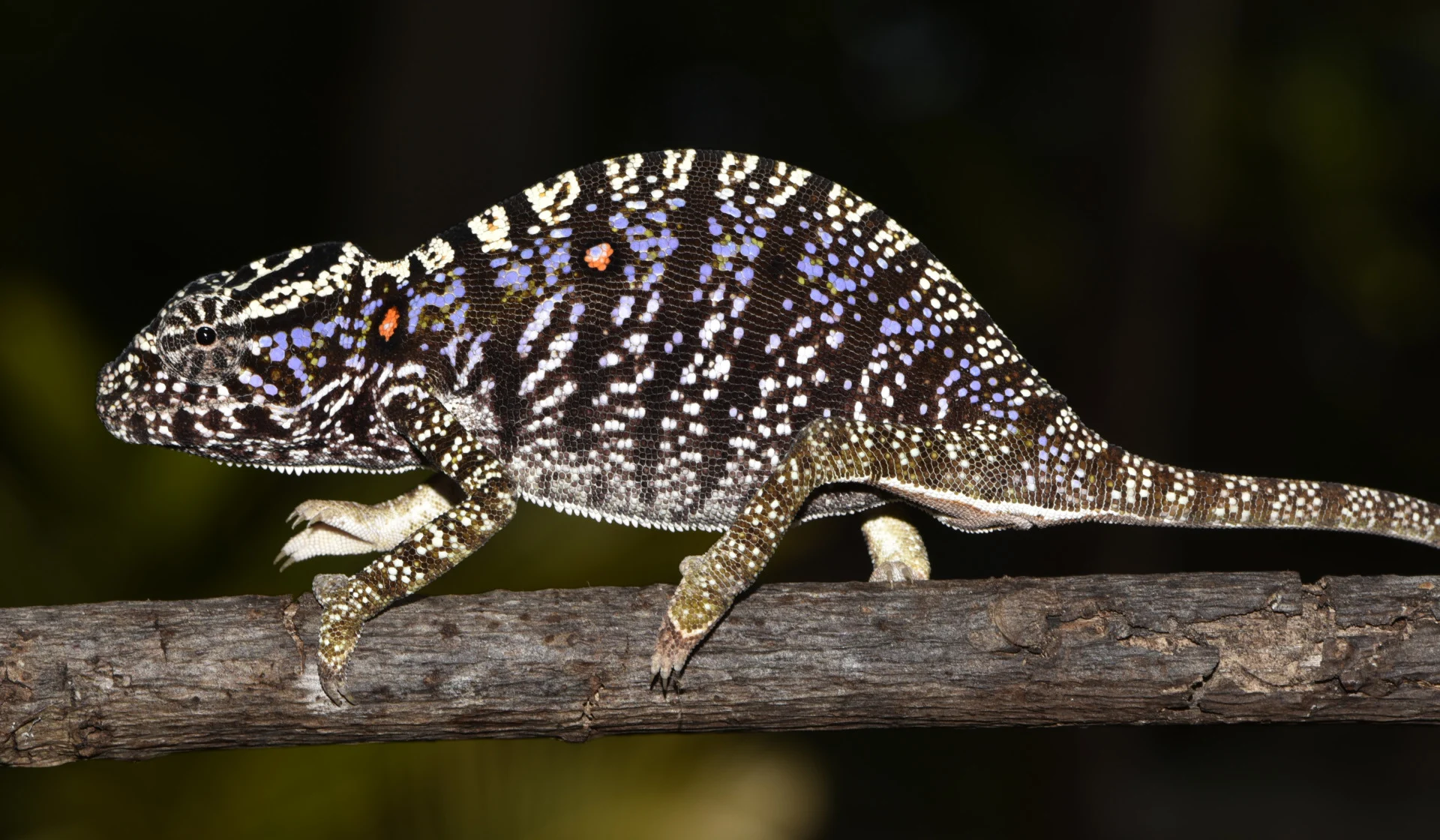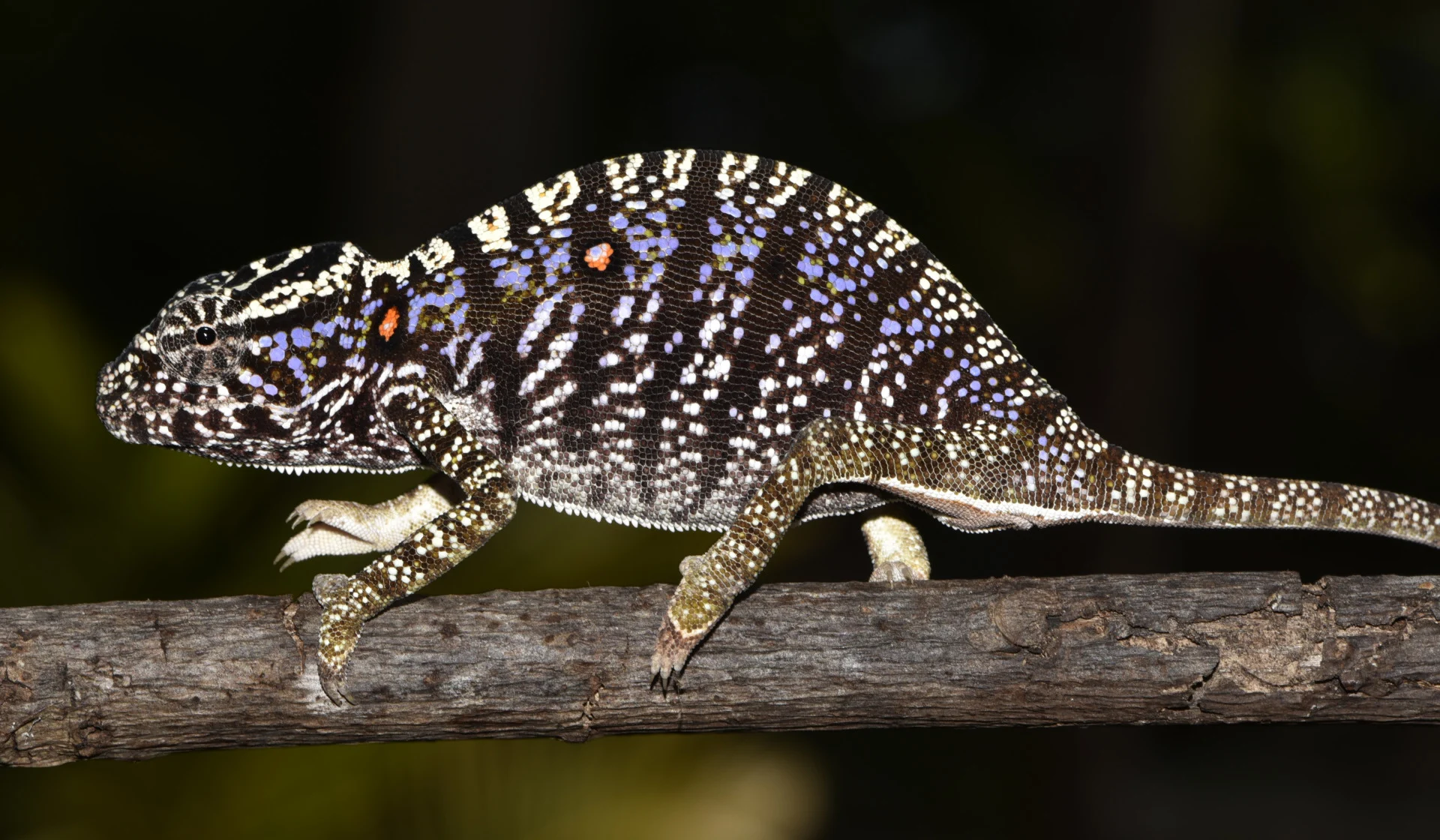
Scientists rediscover chameleon in Madagascar last seen 100 years ago
A conservation program that began in 2017 is cited as the reason for the rediscovery of the Voeltzkow's chameleon in Madagascar.
Scientists have rediscovered an elusive chameleon in Madagascar that was last seen over a century ago. The Voeltzkow's chameleon is a unique species that have a lifespan of just a few months during the rainy season in northwestern Madagascar. Until the spring of 2018, this species had not been spotted since 1913.
The female chameleon had never been documented before and the study notes that their colouration is “highly variable and can be extremely colourful.” The researchers say that when stressed, the dark green stripes on the females change to black, a violet stripe appears and runs from their cheek to the basis of the tail, and white and black speckles appear on parts of their tail and head. Alternatively, the males largely remain green throughout their lives.

A male Voeltzkow's chameleon. Credit: Kathrin Glaw
The study says that the rediscovery of Voeltzkow's chameleons can be attributed to the NGO Global Wildlife Conservation program that was initiated in 2017. The program aimed to rediscover poorly known species that had not been recorded for several decades or centuries and created a list of “25 most wanted lost species.” In addition to rediscovering Voeltzkow's chameleons, the silver-backed chevrotain, Jackson’s climbing salamander, Wallace’s giant bee, and the velvet pitcher plant were also rediscovered across different parts of the world.
While the researchers were not able to determine all the locations that Voeltzkow's chameleons live in Madagascar, they say that they almost certainly occur in Antrema, a newly protected conservation area. Several human-caused pressures are affecting Antrema, including slash-and-burn agriculture and wildfires, but the reserve status creates hope that the habitat will reduce the extinction risk Voeltzkow's chameleons are facing.

A stressed female Voeltzkow's chameleon. Credit: Frank Glaw
The researchers say that rediscovering lost species are “very important” as they provide useful data that can be used in conservation measures and also provide hope during the current biodiversity crisis.
“Our planet is probably facing the beginning of an enormous extinction of species, often referred to as the ‘sixth mass extinction’, the ‘Holocene extinction’ or the ‘Anthropocene extinction.’ In contrast to the five earlier catastrophic extinction periods in the Earth’s history, the current loss of biodiversity is caused by human activity,” the study states.
PRESSURES FROM CLIMATE CHANGE, HUMAN ACTIVITY
Researchers confirm that many unique species in Madagascar are facing enormous pressures from human activity. The warming annual temperatures are causing hundreds of species to face harsher conditions, changing food sources, and more extreme weather events, such as cyclones that threaten extreme damage to the environment. Madagascar is a nation that has one of the highest exposures to the cyclones that impact Africa, which have become increasingly frequent and severe as temperatures climb.
In addition to the changing physical environment, climate change will compound the pressures of overharvesting and biodiversity loss, says a study published in Nature Climate Change.
These researchers say that Madagascar contains 5 per cent of the world’s biodiversity and 90 per cent of these species are only found there, such as the internationally recognized ring-tailed lemurs. The Nature study says that the warming temperatures in addition to deforestation could result in a 38–93 per cent decline in the number of ruffed lemurs by 2070, which would have cascading effects in forests they inhabit.

Credit: Pexels via Pixabay
Lemurs and other rare species also face indirect threats from climate change as the warming temperatures affect human behaviours, such as hunting. The Nature study says that high densities of lemurs inhabit intact forests in rural regions where “poor and food-insecure households hunt more wildlife than do those that are food secure.” Food insecure hunters are expected to face growing challenges as species suffer from climate change, which demonstrates how Madagascar’s biodiversity will continue to face pressures from both the changing climate and human activity.
Thumbnail courtesy: Frank Glaw












